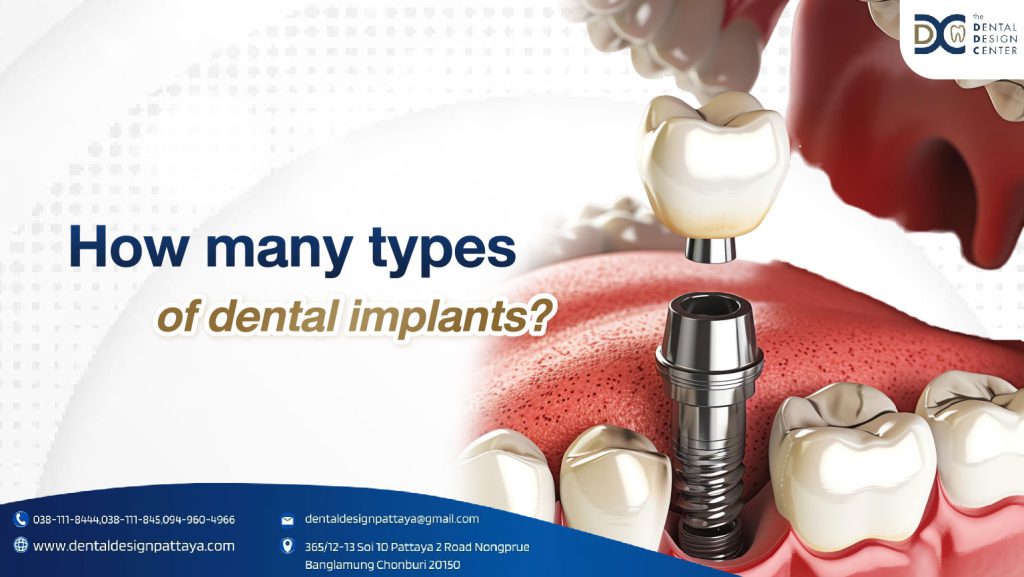What is a dental implant? It’s a common question that many people ask. Let’s start by understanding what a dental implant is and why it’s necessary. A dental implant is a dental procedure that replaces missing teeth with an artificial tooth root. This is done by surgically placing a dental implant into the jawbone where the tooth is missing. The implant then fuses with the jawbone, providing a strong foundation for a replacement tooth, such as a crown or bridge. There are three main types of dental implants: Conventional Implant, Immediate Implant, and Immediate Loaded Implant.
How Dental Implants Work

Traditional dentures can often feel uncomfortable or loose. Dental implants, on the other hand, provide a more natural and secure solution for missing teeth. These implants are surgically placed into the jawbone, where they fuse with the bone over time. This creates a strong foundation for a replacement tooth, such as a crown or bridge. As a result, dental implants provide a more stable and comfortable fit, allowing patients to speak and eat with confidence.
(read more: What are dental implants and everything you need to know)
Types of Dental Implants
As mentioned, dental implants are a great way to replace missing natural teeth. There are three primary types:
1. Conventional Implants
Conventional implants are commonly used for patients requiring a single or multiple tooth replacements. This procedure typically involves two stages: after the implant is placed, a healing period of about three months allows the implant to fuse with the jawbone. Following this, a dental crown or bridge is attached to the implant.
Conventional implants offer a versatile solution for various bone conditions. However, for patients with moderate to severe bone loss, bone grafting may be recommended prior to implant placement.
2. Immediate Implants
Immediate implants, as the name suggests, are placed immediately after a tooth is extracted. This significantly reduces treatment time and can help minimize gum recession. However, this procedure requires adequate bone quality and quantity.
3. Immediate Loaded Implants
Immediate loaded implants allow for the placement of a temporary or permanent crown immediately after implant placement. This procedure is suitable for patients with adequate jawbone density.
Preparing for Dental Implant
Before undergoing dental implant surgery, patients must undergo a thorough examination and evaluation by a specialist. This is essential to prevent any potential complications after the procedure. Patients with pre-existing medical conditions, those who are taking regular medications, or those with allergies should inform their dentist about these details before the surgery. Additionally, it is crucial for patients to discuss the treatment plan with their dentist, including the type of implant and restoration to be used. This will help prevent complications and ensure the best possible outcome.
Dental Implant Procedure

This is a common question among patients considering dental implants. While the exact duration varies from person to person, the entire process typically takes around 4-5 months. The timeline for each stage can differ, depending on individual circumstances. Here’s a breakdown of the general steps involved.
1. Initial Oral Examination
A comprehensive oral examination, including panoramic X-rays and CT scans, is conducted to assess the patient’s oral health. This evaluation helps determine the thickness of the jawbone and the condition of the surrounding tissues.
2. Site Preparation
Once the initial assessment is complete, the dentist prepares the treatment area. If there’s an infection, it needs to be treated first, which may take 2-3 weeks or even longer in some cases. Additionally, if the patient has insufficient bone, a bone graft may be necessary to ensure the implant’s stability.
3. Implant Placement
Local anesthesia is administered before the implant is surgically placed into the jawbone. After the procedure, the area is sutured. The stitches are usually removed after 1-2 weeks, and the implant is allowed to fuse with the jawbone for approximately 3-4 months.
4. Post-Surgical Healing
For immediate load implants, the next steps can begin immediately after placement. However, for other types of implants, a healing period of 2-6 months is typically required to allow the implant to fully integrate with the jawbone.
5. Abutment Placement and Restoration
An abutment, a small metal post, is attached to the implant to serve as a connection to the crown or bridge. After a week or two, an impression is made by creating a custom-made crown or bridge. The final restoration is then cemented onto the abutment, securely anchoring the implant to the jawbone.
Post-Dental Implant Care Instructions
After undergoing dental implant surgery, it is crucial to follow specific care instructions to ensure successful healing and a long-lasting result. Here are some essential guidelines:
- Soft Diet: During the initial healing period, it is recommended to consume soft foods like porridge or soup. This helps prevent food particles from getting lodged in the surgical site and reduces the risk of infection.
- Avoid Extreme Temperatures: Refrain from consuming extremely hot or cold foods and beverages. Temperature extremes can irritate the surgical area and prolong the healing process.
- Adhere to Medication: Follow your dentist’s prescribed medication regimen strictly. Antibiotics and pain medications help to reduce inflammation and manage discomfort.
- Avoid Alcohol and Tobacco: Both alcohol and tobacco can hinder the healing process and increase the risk of infection. It is advisable to avoid these substances, especially during the initial healing phase.
- Maintain Oral Hygiene: Continue to brush and floss your teeth regularly, but be gentle around the surgical site. Regular oral hygiene helps prevent infection and promotes healing.
- Avoid Acidic Mouthwashes: Acidic mouthwashes can irritate the healing tissues. Use an antibacterial mouthwash as recommended by your dentist.
- Follow-Up Appointments: Attend all follow-up appointments as scheduled to monitor your healing progress and ensure that the implant is integrating properly with your jawbone.
- Manage Bruxism: If you have a habit of grinding or clenching your teeth, consult your dentist about a night guard or other appropriate treatment. This can help protect your implant and prevent damage to your bite.
- Report Any Issues: If you experience any unusual symptoms or discomfort, contact your dentist immediately.
Conclusion
Dental implants offer one of the most effective and advanced solutions for tooth replacement. As a specialized dental procedure, it ensures a high level of safety due to the use of internationally certified materials and equipment. This guarantees optimal results and minimizes the risk of complications.
If you’re looking for a dental clinic with experienced specialists for dental implants, Dental Design Center is your ideal choice. We are a Dental Clinic Pattaya, offering comprehensive dental services, providing personalized care and ensuring the best possible outcomes for all our patients.

